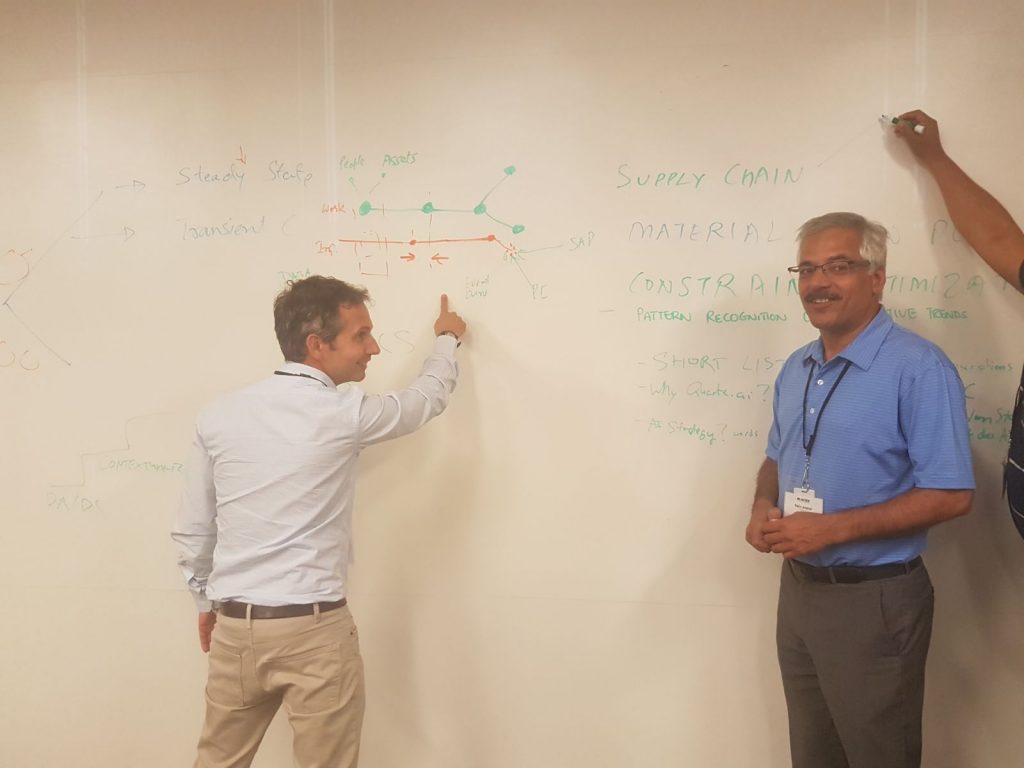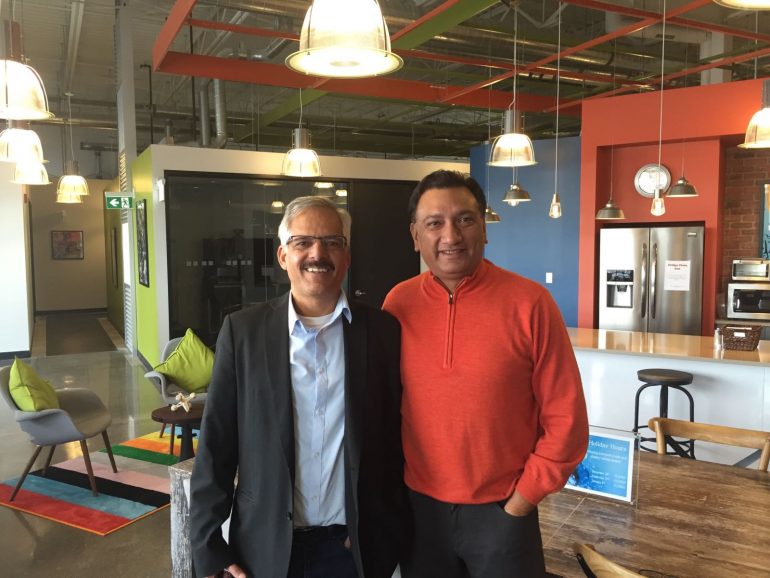As part of a regular series powered by Microsoft, BetaKit interviews prominent Canadian CTOs speaking earnestly on the biggest challenges they face in their role, as well as future technology predictions in their space.
As the founder of Waterloo-based Quartic.ai, Rajiv Anand is focused on building a niche within the relatively new sector of Industrial Internet of Things (IIoT). The challenges — and work — never stop, but Anand says that’s the exciting part.
Listen to learn, then share
When asked about the differences between being CTO of an early-stage company versus a growing company, Anand didn’t mince words.
He explained that in the early days, regardless of your title or position, you need to focus on “constant validation” from customers that what you’re building is valuable and solves their problems. At the same time, Anand says that startups need to slow down a little to ensure that they’re getting high-quality feedback instead of steaming forward without proper customer input.
“I can’t see someone who needs a lot of structure or guidance, who aren’t willing to pivot almost daily, being that successful in a startup.”
– Rajiv Anand
“You’re constantly on your toes,” he said. “My natural learning style is to read a book cover-to-cover, but I had to re-orient myself to quickly adapt because I can’t afford that time anymore. It’s not the most effective way of learning when you’re building a startup — talking to customers is.”
With Quartic now at almost 10 people, translating learning into actionable items for his team has become a challenge for Anand, who is used to building by himself.
“You have to learn in such a way that you can articulate it to someone who is going to pick up the concept quickly and be able to build technology based on their new knowledge,” he said.
Build the giants, then stand on them
That business knowledge isn’t just about learning a new code style or understanding a concept, however. It’s also about making sure you are using robust technology frameworks that work for your specific use-case.
Choosing which code or open source library to leverage, for instance, isn’t just a matter of identifying which fits nicely with your current code base. In the industrial IoT space, one individual machine could be handling millions of data points, so the frameworks used to create the code have to be scalable beyond what most people typically build.

Legacy systems exist in the broader IoT and AI fields, which are somewhat beneficial for Quartic. Anand said, though, that the Industrial IoT space is on such a different level when it comes to data requirements that “we have to build the giants, and their shoulders, before we can stand on them.”
Coming from this mentality, Anand believes that the evolution of tech has altered the startup CTO role fundamentally from deep-product expert to leverage-and-go multi-functional leader.
“There are so many choices available now when it comes to technologies, code bases, and tools, that picking the wrong one can lead to a lot of technical debt,” he said.
“It’s hard to find out if you’ve picked the right one, and CTOs need to be able to think through multiple dimensions in order to figure out which tools they can leverage quickly to accelerate their own development.”
Plan, then prepare
The decision-making process for CTOs will only get more difficult, Anand said, as the pace of technological advancement accelerates. For this reason, he cautions all CTOs to ensure they are paying attention to potential future technological capabilities and planning for them now.
“Even if something seems like science fiction now, there’s a possibility that it will be a reality soon enough so you want to have it on your radar,” he said. “I think CTOs should be more future-focused than they were before, given how fast technology is changing.”
One example of this, in Quartic’s world, is the cloud versus the “edge.’”
“I believe the future will have highly distributed networks, which means that new algorithms will need to be nimble enough to run even with big constraints.”
The cloud is a commonly used term for data held in virtual storage through the internet, but the ‘cloud’ is surrounded by the “edge,” which Rajiv explained are the networks and algorithms that support and build up the cloud.
“I think the lines between the cloud and edge will disappear,” he said. “I believe the future will have highly distributed networks, which means that new algorithms will need to be nimble enough to run, even with big constraints.”
For the Industrial IoT space specifically, this presents a challenge. Much of the technology, for instance, won’t work if it isn’t connected to the machine it is collecting data from in a very tight, secure way. Without this connection, manufacturers may not trust the technology because they fear the information – often surrounding regulated items like food or drugs – might get into the wrong hands.
Outside of Industrial IoT, Anand’s lesson for CTOs is to ensure they are thinking not only about how they can build something quickly, but build it in a way that respects how the industry they are disrupting does business.
Challenges like these happen anywhere, but are more pronounced at startups than bigger firms because there is less infrastructure to support them.
Given this, Anand suggests that anyone considering a CTO role at a startup makes sure they are ready for a world with limited structure, requiring them to be fully independent.
“I can’t see someone who needs a lot of structure or guidance, who aren’t willing to pivot almost daily, being that successful in a startup.”
Read more about Quartic.ai’s technology story on the Microsoft blog


